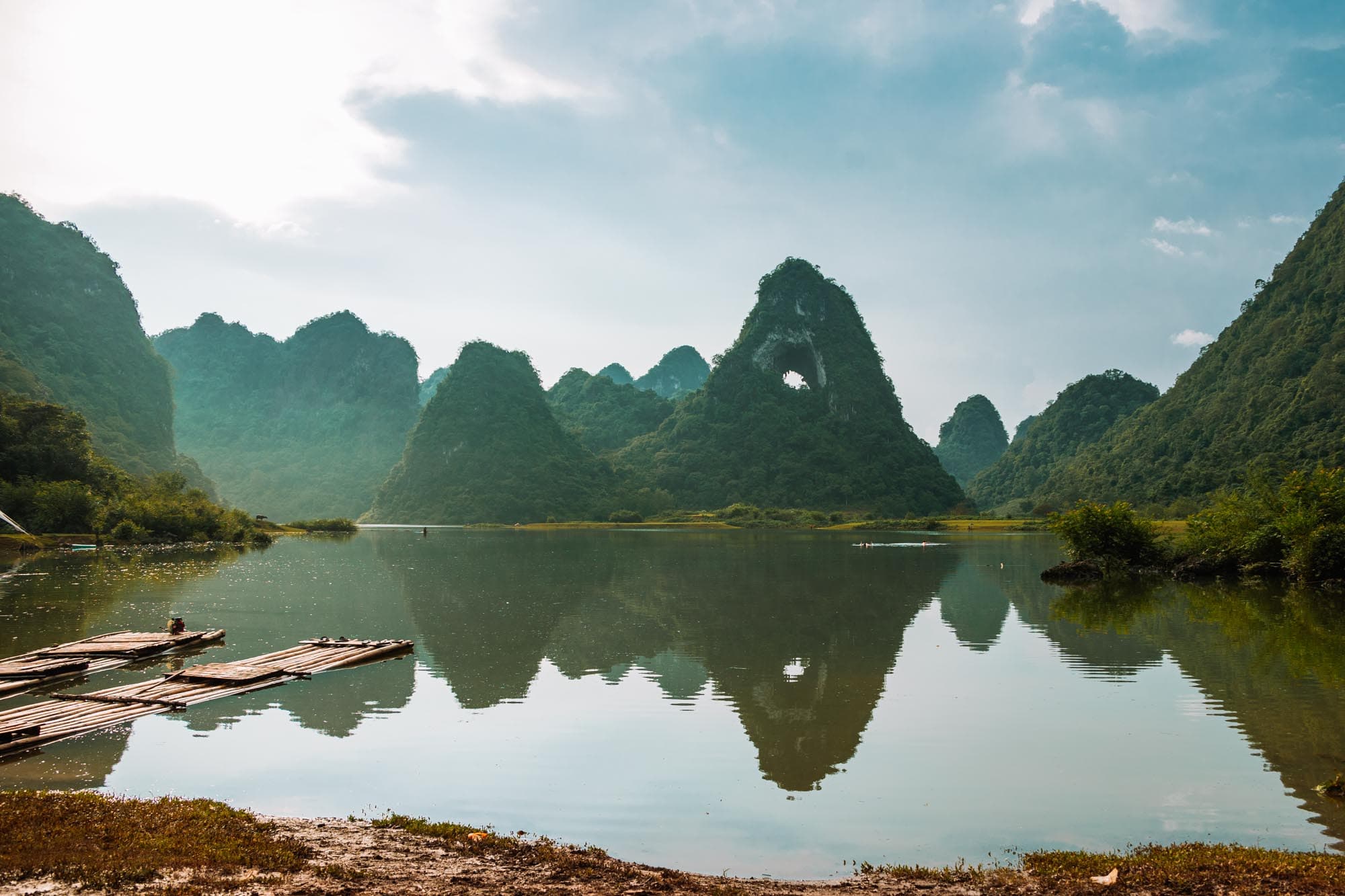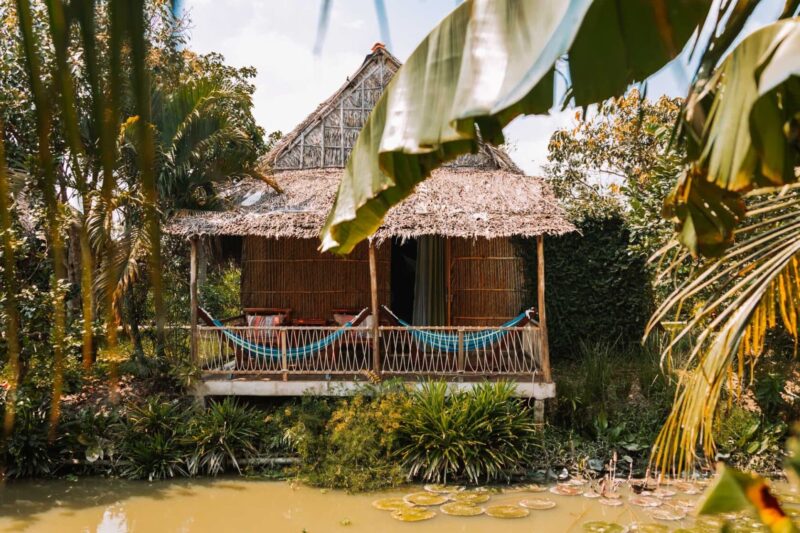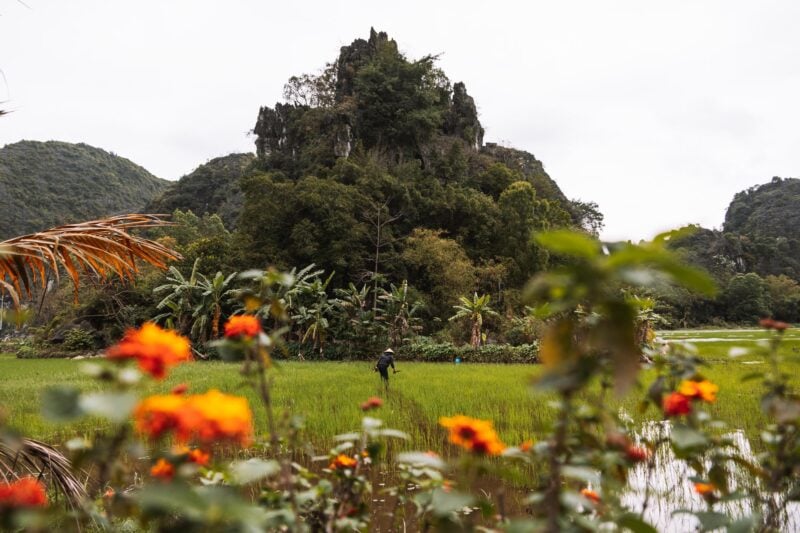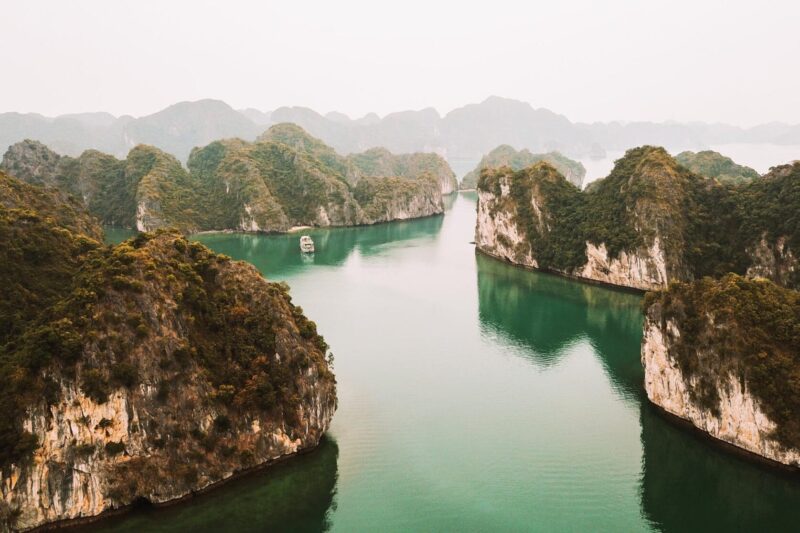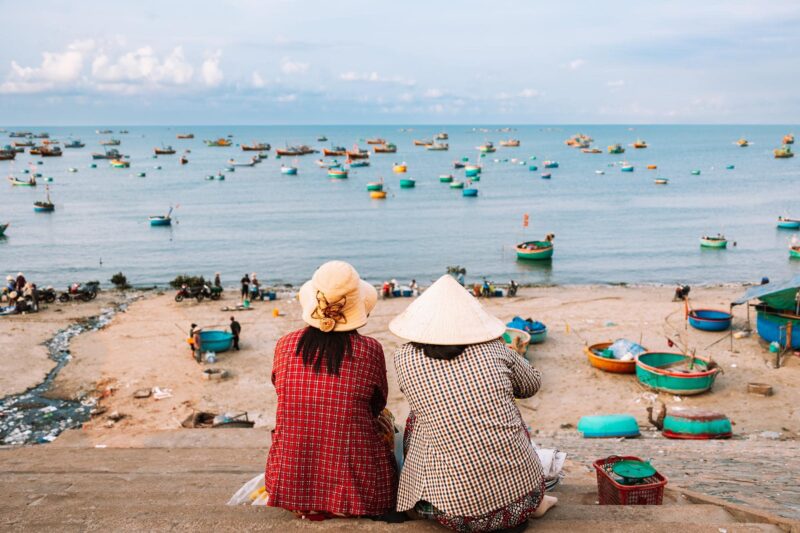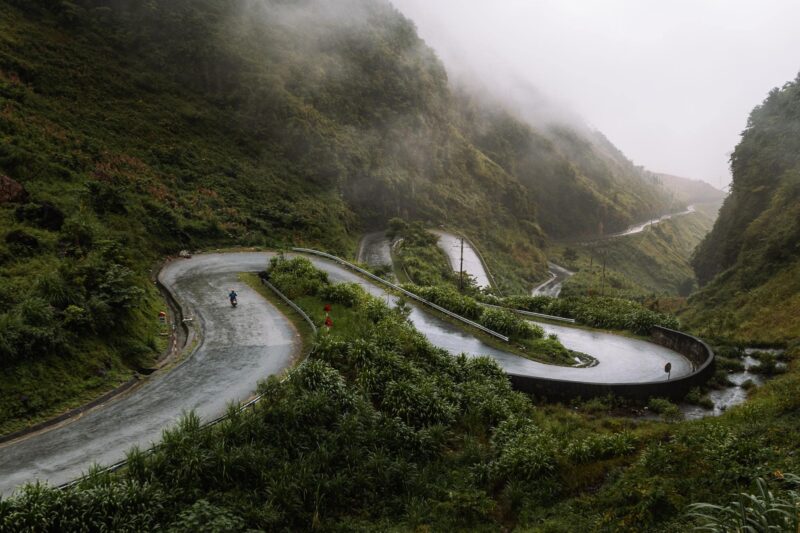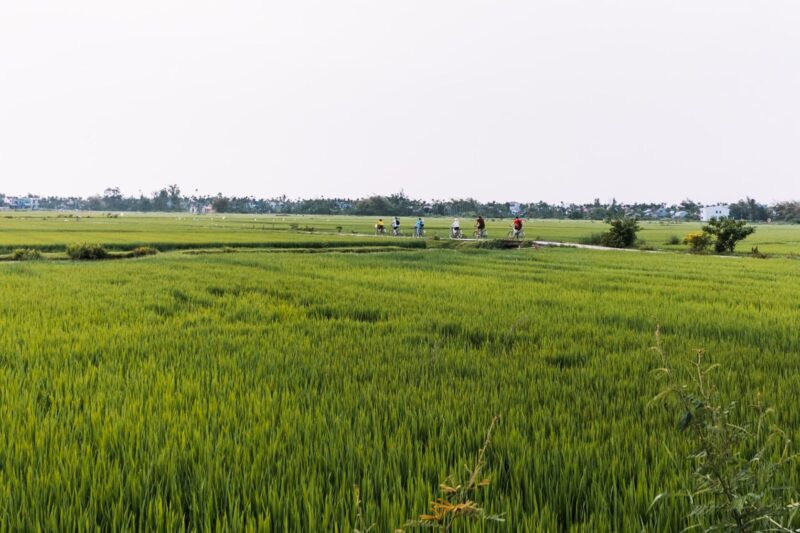Hidden in the north of Vietnam lies the incredibly beautiful province of Cao Bang. This is the perfect destination for anyone looking to travel off the beaten path. Cao Bang is located near the border with China and is known for its pristine mountain and water landscapes, as well as its rich culture. Various ethnic communities live in Cao Bang, such as the Hmong, Dao, and Tay. Hop on a scooter and be amazed by the stunning nature and the friendly locals who will warmly welcome you. Curious about this unknown region in Vietnam? Read all the tips for Cao Bang below!
Good to know: Cao Bang is the name of both the province and the city of Cao Bang. Many things to do are in Cao Bang Province, and the city of the same name is a good base to explore this region.
How to Travel to Cao Bang?
Most people travel to Cao Bang from Ha Giang or Hanoi. Below, you can read how to get there from these destinations.
From Ha Giang to Cao Bang
In Ha Giang, there is a bus that departs every morning, taking you to Cao Bang in about 7 hours. You can pre-book this bus if you want to secure a spot.
From Hanoi to Cao Bang
From Hanoi, there are multiple buses departing for Cao Bang throughout the day. The bus journey takes approximately 6 hours. Check the current departure times and reserve a seat on the bus.
What to Do in Cao Bang?
Cao Bang is adventurous and offers some beautiful attractions that you shouldn’t miss.
Visit the Impressive Ban Gioc Waterfalls
The Ban Gioc Waterfalls are the main reason why many travelers visit Cao Bang. It is the largest waterfall in Vietnam and is often considered the most beautiful in the country. The impressive waterfall is massive, consisting of multiple levels and measuring 300 meters (984 feet) wide and 30 meters (98 feet) high. The waterfall forms a natural border between China and Vietnam. Unfortunately, you cannot cross from one country to another for a brief visit. However, you can get very close to the waterfall by taking a bamboo raft. Make sure to wear a rain poncho because the water rushes down with great force, and you’re guaranteed to get wet.
How to get to Ban Gioc Waterfalls? The waterfall is located 80 km from the city of Cao Bang, and there are various ways to get there. You can take the local bus, join an organized tour, take a taxi, or ride a scooter there yourself. Check with your accommodation in Cao Bang for the different options. They will provide you with more information. If you want to stay near the waterfall, Yen Nhi Homestay Ban Gioc is a recommended choice. You can also enjoy breakfast, lunch, or dinner here, even if you’re not staying overnight.


Explore the Nguom Ngao Cave
Located about 10 minutes’ drive from the Ban Gioc Waterfalls is the Nguom Ngao Cave. The cave was discovered in 1921 and was opened to visitors only in 1996. The cave is composed of ancient coral and crinoid fossils. Crinoid fossils resemble flowers and are also known as sea lilies. These fossils are over 300 million years old! The cave can only be explored with a guide who provides you with a headlamp and water shoes at the entrance. Then, you’ll enter the cave and walk, climb, and scramble through it. While there is a path for most of the journey, some parts have you wading through water up to your ankles. The tour takes about 1.5 to 2 hours.

Explore the Lesser-Known Phong Nam Valley
We’ve arrived at my favorite place in Cao Bang, the Phong Nam Valley. This area consists of large limestone rocks surrounded by rivers, rice terraces, and small villages. It reminded me a bit of Ninh Binh Province, but without the tourists. Few travelers have ever heard of the Phong Nam Valley, making it all the more impressive. Hop on a scooter and explore the most beautiful spots in the valley. There are numerous narrow roads and small villages that are fun to explore. The rice fields are at their most beautiful between July and early October.
Start, for example, at Phong Nam Station and then scooter towards this bridge. Here, you can see water flowing into the valley from different directions. From the bridge, you can navigate to the villages of Na Nhieu or Ngoc Con. The locals you encounter along the way often don’t speak English, but they are incredibly kind and excited to see travelers visiting their hometown! This is where you’ll experience the authentic Vietnam.
Tip: In the Phong Nam Valley, you can find some local convenience stores, but there are few dining options. It’s a good idea to bring some food with you.
Hike to the Phong Nam Valley Viewpoint
Let’s stay in the Phong Nam Valley for a while. You can hike to a viewpoint here, offering a magnificent view of the valley. Drive towards the village of Bò Hay and start the hike at this point, marked by a blue sign between two houses. You’ll walk uphill on large stones along a clearly marked path to reach the viewpoint. This hike takes about an hour. Once you reach the top, you can enjoy a fantastic view of the Phong Nam Valley. Wear good shoes and check the weather forecast beforehand, as the path can become quite slippery if it’s raining.
Tip: If you want to view the Phong Nam Valley from above but don’t have time for a one-hour hike, you can also walk up from this spot. You’ll also have a beautiful view from there.

Swim or Hike around Nui Thung Mountain
For a scenic hike or a relaxing afternoon on the water, visit the valley around Nui Thung Mountain. This mountain is also known as The Angel Eye Mountain due to the opening at the top. The mountain is situated in a beautiful green valley, which you can walk through during the dry season (winter) to eventually hike up to the top. During the rainy season (summer), the entire valley is flooded with water. You can swim here or take a bamboo raft out on the lake. Nui Thung Mountain is located 30 km from Cao Bang.
Wander in the Traditional Village of Phia Tap
Phia Tap is a village in Cao Bang Province known for producing a large amount of incense. Burning incense is an important ritual in Vietnamese culture to honor ancestors, and in Phia Tap, you can see how incense is made. Sandalwood sticks are first dipped in a mixture of aromatic herbs, which can include cloves, cinnamon, or lavender. Afterward, they are left to dry, which can take several days depending on the weather. The villagers in the town may not speak English, but they will try to show you how it’s done.
Best Restaurants in Cao Bang
ZoZo Food Cao Bang – This restaurant offers fresh Vietnamese spring rolls, sushi, and delicious finger food snacks.
Pizza & Beefsteak Chi – You can enjoy the tastiest pizzas in Cao Bang here. If you’re in the mood for a regional specialty like Bánh cuốn Cao Bằng, they’ve got you covered. This dish consists of steamed rice paper filled with vegetables and meat.
Toc Ca Phe – This trendy café serves delicious smoothies and coffee. It’s a cozy place, and you can even play a game of pool.
Our Favorite Places to Stay in Cao Bang
Because Cao Bang is not very developed in terms of tourism, there isn’t a wide selection of good hotels and hostels. However, there are two places that are worth recommending. One of them is the unique MiCasa hotel. This hotel is located in a fantastic spot just outside the center of Cao Bang. If you book the bungalow with a view, you can wake up and see the beautiful nature right from your bed. Another option is Lan’s Home, a nice place in the heart of Cao Bang. Many restaurants and shops are within walking distance. You’ll sleep in a cheerful double room with air conditioning and a private bathroom. The owner speaks good English and is happy to help with all your questions about Cao Bang.
 MiCasa MiCasa |

|
